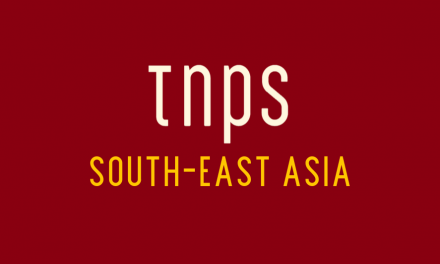Four out of ten Argentines have read one or more books in the past twelve months, according to a new study by the Universidad Argentina de la Empresa, but only 7% of those chose to read digitally.
At first glance the study seems to reinforce a common narrative that Latinos don’t read, and that ebooks have no traction in Latin America, but does that narrative reflect reality?
Studies like this are inevitably swayed by the survey questions and the people asked.
Similarly, snapshots of the latest reported figures from publishers and retailers show us, in essence, what we have asked to see. Retailers tell us about bricks & mortar retail sales, publishers tell us what they want to share of their sales, while an untold number of sales and untold volume of revenue goes unremarked from sales through other channels. For example, direct to consumer sales and subscription services, sales by self-publishers, and publishers like A-Pub that keep all their figures to themselves.
When we look at the trade figures we need to keep in mind that the numbers, like the survey results, only show a partial picture.
A report from the Argentina Chamber of Books indicates that in 2017 some 28,000 new books were published, of which 5,000 were digital releases.
Just what drives this disinclination to digitise is unclear, but aside from natural conservatism we must allow that publishers in Argentina and elsewhere have seen what happens in the US and UK when publishers allow one digital player too much market dominance, and they are understandably reticent to engage fully with digital’s potential at home.
Thus we see, in the USA especially, the biggest publishers artificially slowing the digital market by raising front-list ebook prices.
But at the end of the day, these are protectionist tactics, and not the solution to the problem.
In Argentina last year 90% of internet users made at least one on-line purchase, and that number can only increase. Publishers need to find a way to embrace digital and turn it to their advantage without sacrificing their independence.
But do publishers realise just how important digital might be to them? Possibly not.
Back at the start of this century, just eighteen years ago, Argentina’s internet users numbered just 2.5 million.
A search on Google for “internet users Argentina” comes up with, in first place, this intriguing image:

Argentina’s internet use at 41%! That’s not to be sneezed at.
At which point some might end their search, confident Google has delivered the information they need.
But hold on. Take a closer look and you’ll see that, for reasons only Google can tell us, the primary result for how many Argentines use the internet is a graphic from 2011.
Dig a little further and you’ll find that, far from being at 41% penetration, Argentina in 2018 is one of the world leaders for internet use, with internet penetration of 93%, comparable to the USA.
In fact Argentina today has 41.5 million people online, out of a population of just 44.7 million.
But let’s stick with that 2011 figure a moment, because it offers a useful insight.
In 2011 the “ebook revolution” was just taking off. While the Kindle store had been up and running in the USA since 2007, it only ventured abroad in 2010 (UK) and 2011 (the safe west European countries).
It still, in 2018, has no presence in Latin America beyond Mexico and Brazil.
And here’s the thing: In the US the success of the Kindle store did not come overnight. Expensive trad-pubbed ebooks were not a big attraction to readers who at the time needed to buy an expensive ereader to read them or use the Kindle app on their PC.
It was the twin proliferation of smartphones, widening access to the Kindle store, and the proliferation of indie authors selling ebooks at what were then considered crazy low prices, that drew the consumers to Amazon for digital reading.
Legendary indie names like Amanda Hocking, John Locke, Joe Konrath, etc, have no equivalent in countries like Argentina, and that absence of a huge volume of inexpensive self-published books has the effect of keeping average ebook prices high, and that in turn deters consumers from transitioning to digital, which in turn deters publishers from investing in digital.
But what we should not do is conflate low interest in ebook sales, and relatively low sales of high-priced print books, with a lack of interest in books.
I covered this in a post here on TNPS in November 2017, which looks at Argentina as well as Uruguay..
Uruguay’s Night of the Bookstores. Who says Latinos don’t read?
Consider:
The typically 20-day long Buenos Aires International Book Fair in Argentina gets 1.2 million visitors each year. That’s 2.7% of the population making the effort to attend the national book event.
In March 2018 Buenos Aires celebrated the eleventh year of its Night of the Bookstores, when the city’s bookstores stay open until after midnight to celebrate books and culture, with restaurants and bars getting in on the act, attracting tens of thousands of visitors.
Buenos Aires is not only the capital of Argentina but also the book capital of the world.
With a population of around 2.8 million, Buenos Aires has at least 734 bookstores – roughly 25 bookshops for every 100,000 inhabitants. Worldwide, only Hong Kong comes close, with 22 bookshops per 100,000, followed by Madrid in a distant third with just 16 and compared to a mere 10 bookshops for every 100,000 for London.
Just maybe, if publishers and retailers could get their act together and offer better choice at better prices, both ebooks and print would do a whole lot better in Argentina, because clearly the interest is there.
And ebooks, of course, are the format that has most reach and most pricing flexibility.






Very intelligent article; many thanks to the author for avoiding the usual stereotypes. People here do like books, expensive, unaffordable books, and cannot use Kindle unless they read English: Amazon has relatively few titles in other languages.